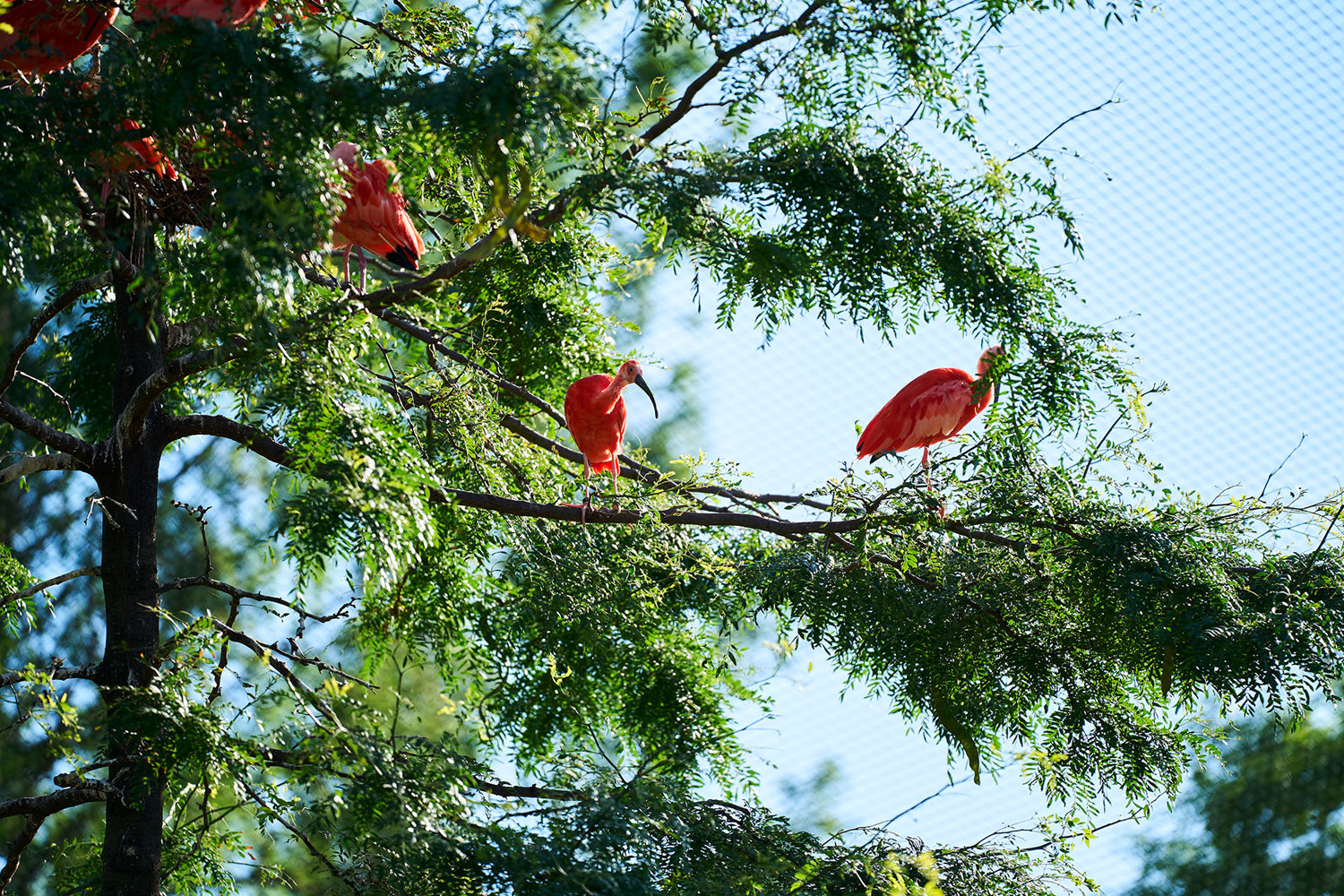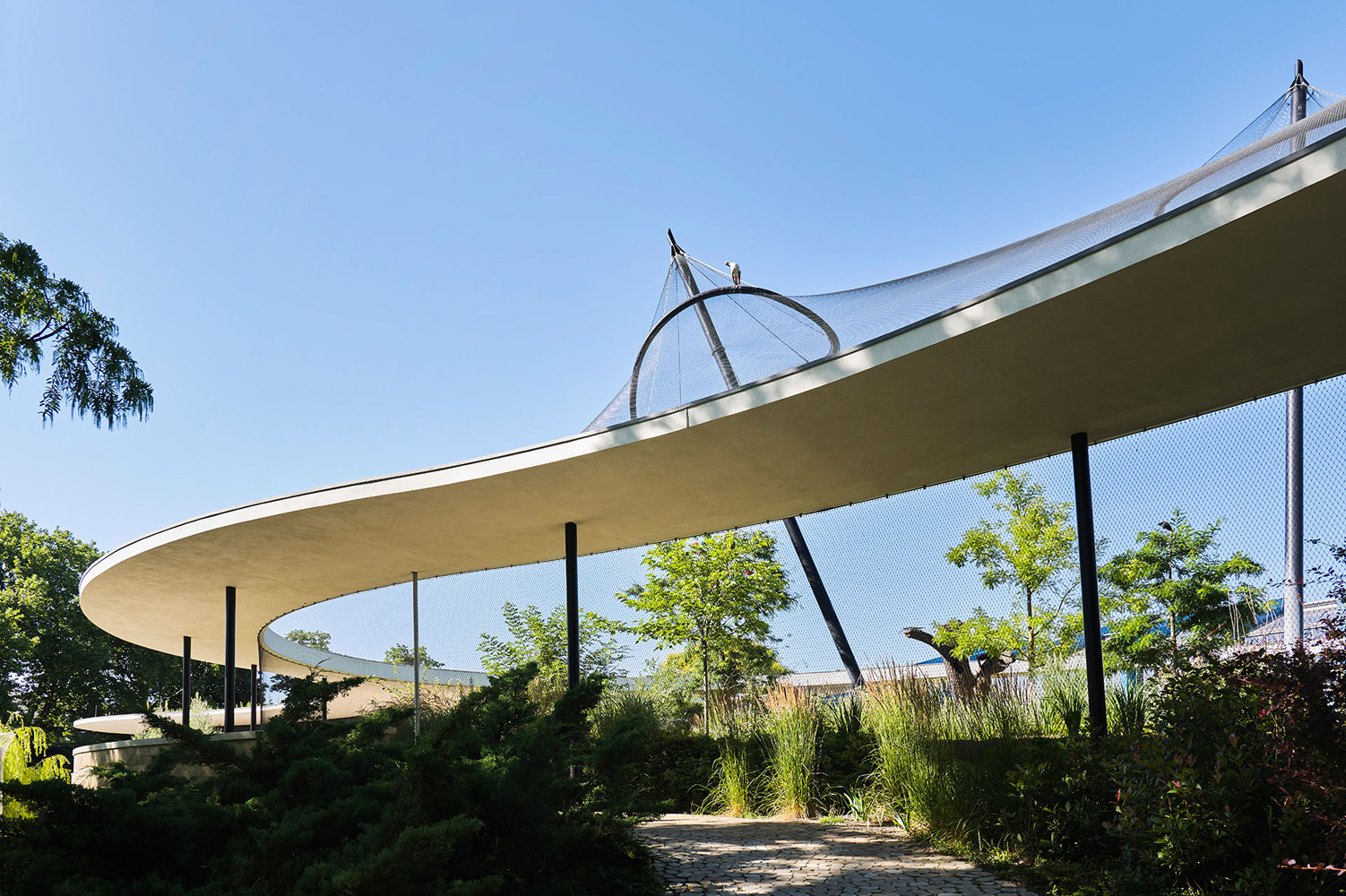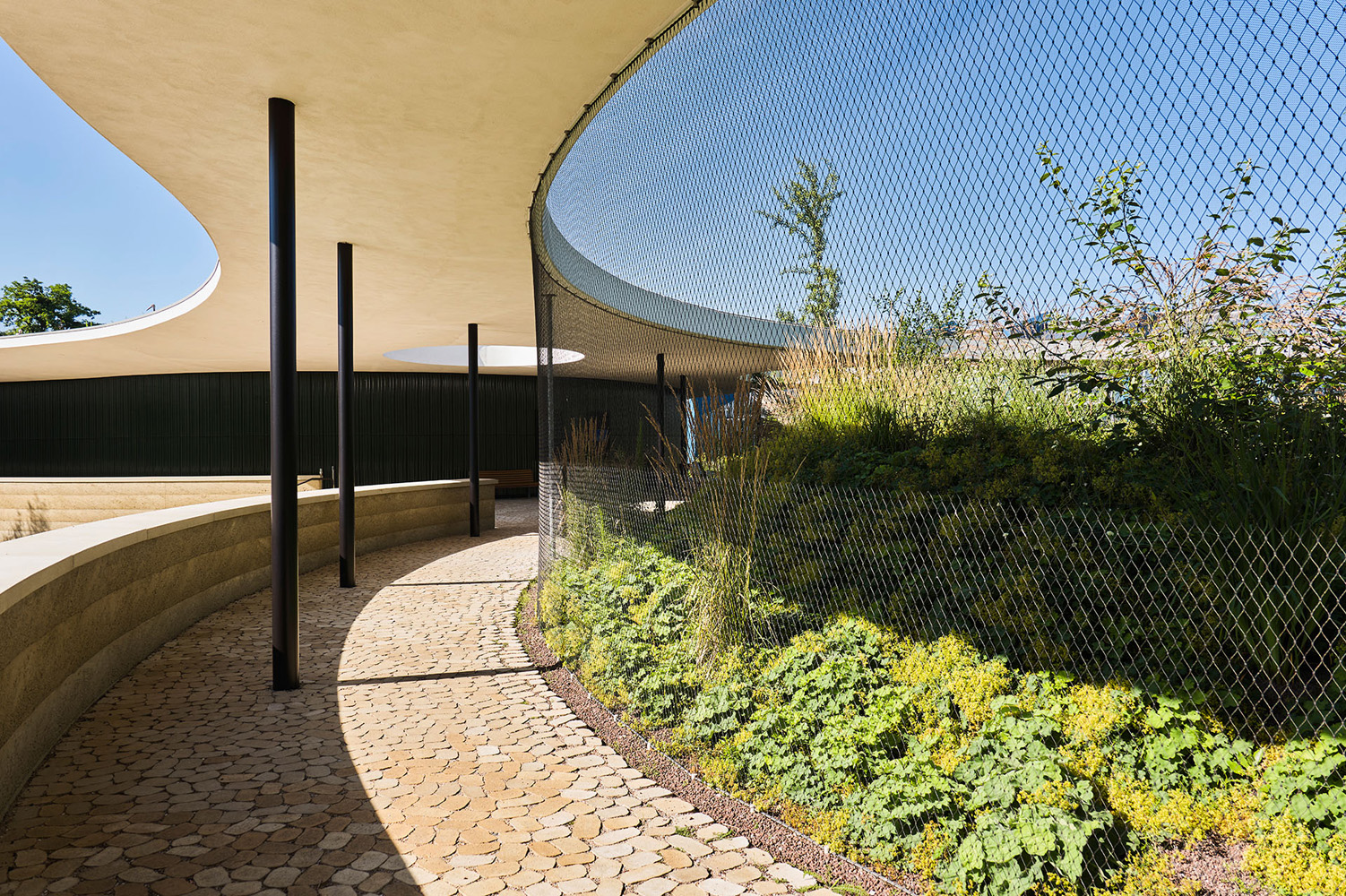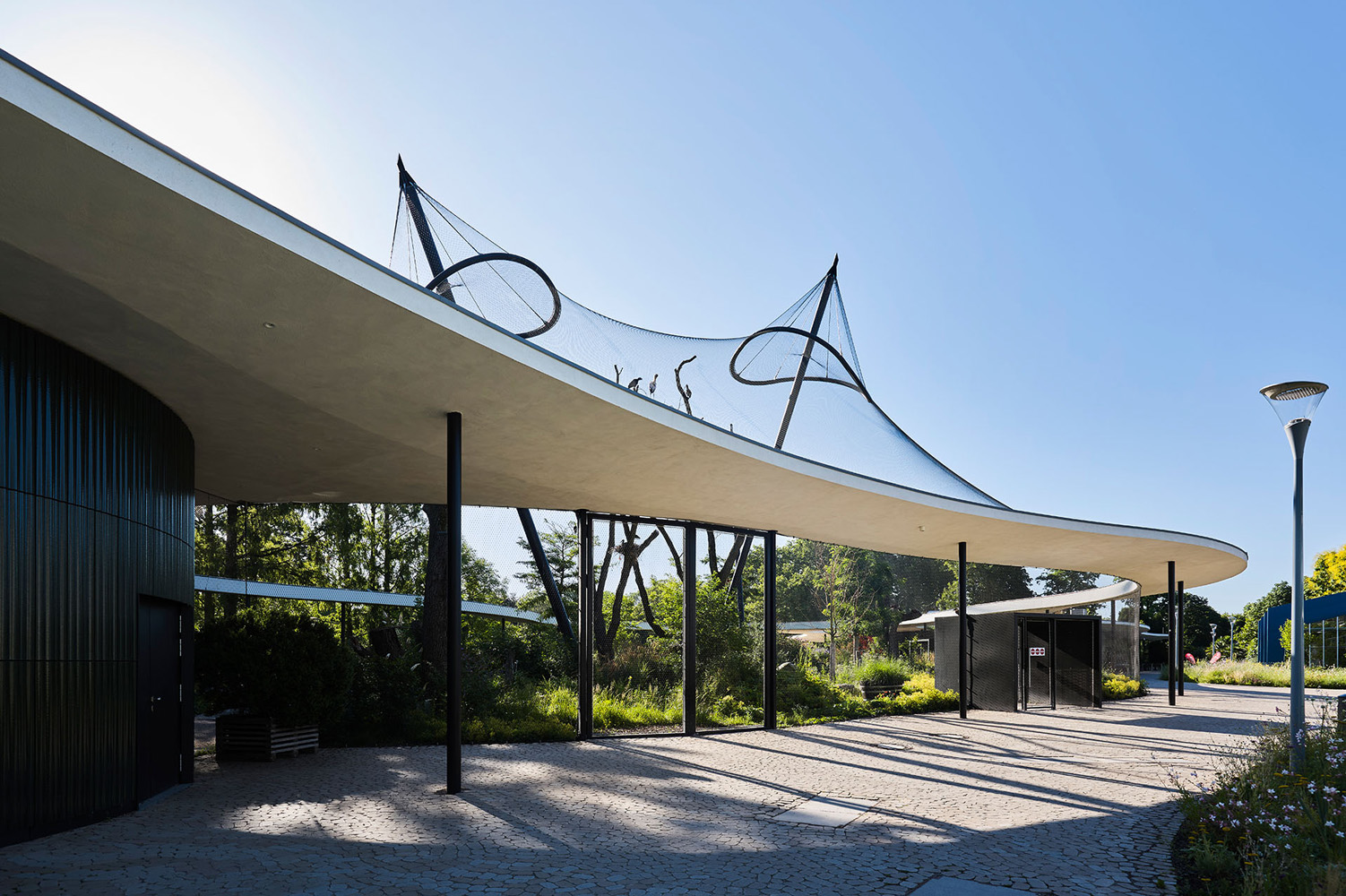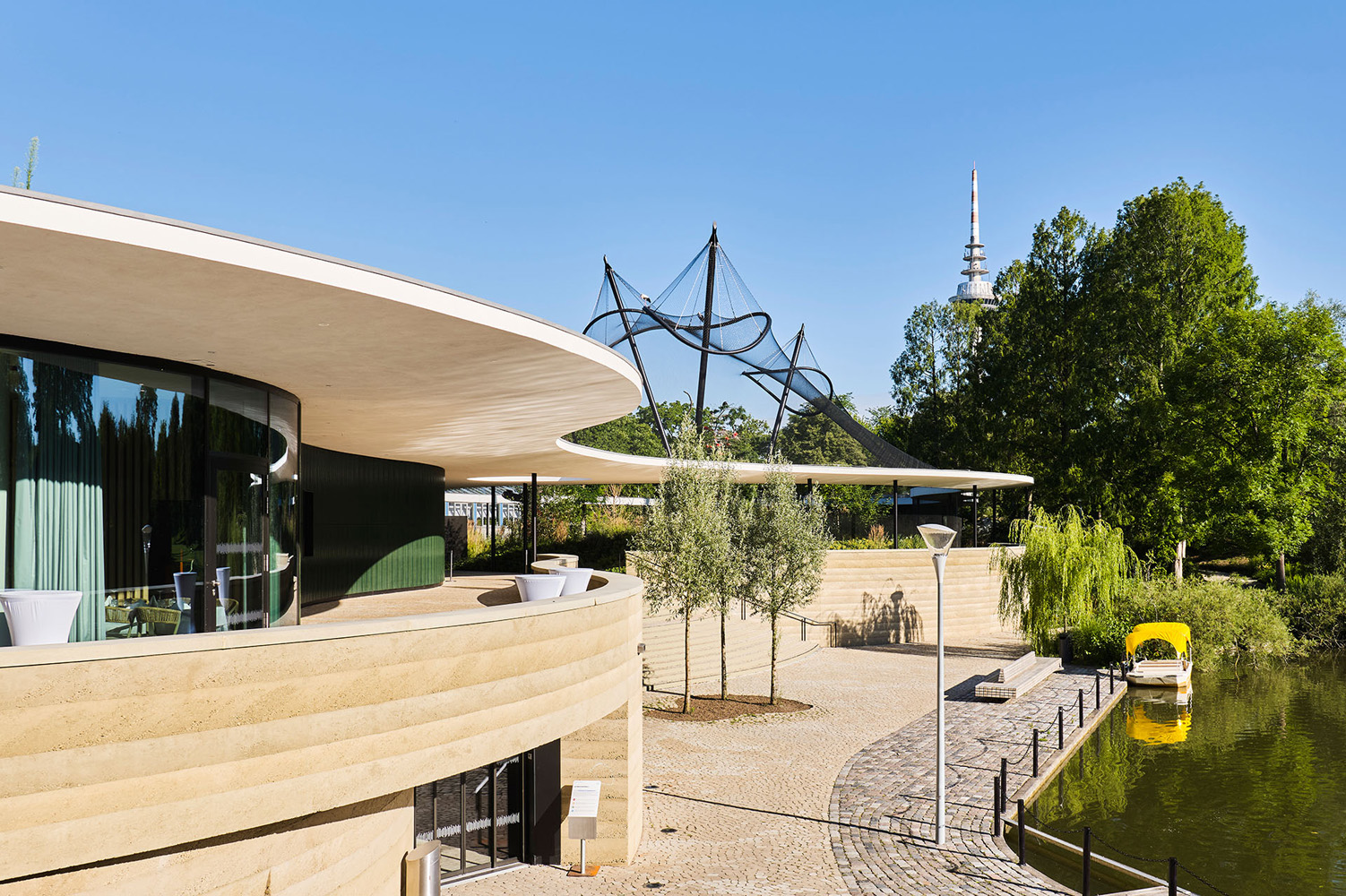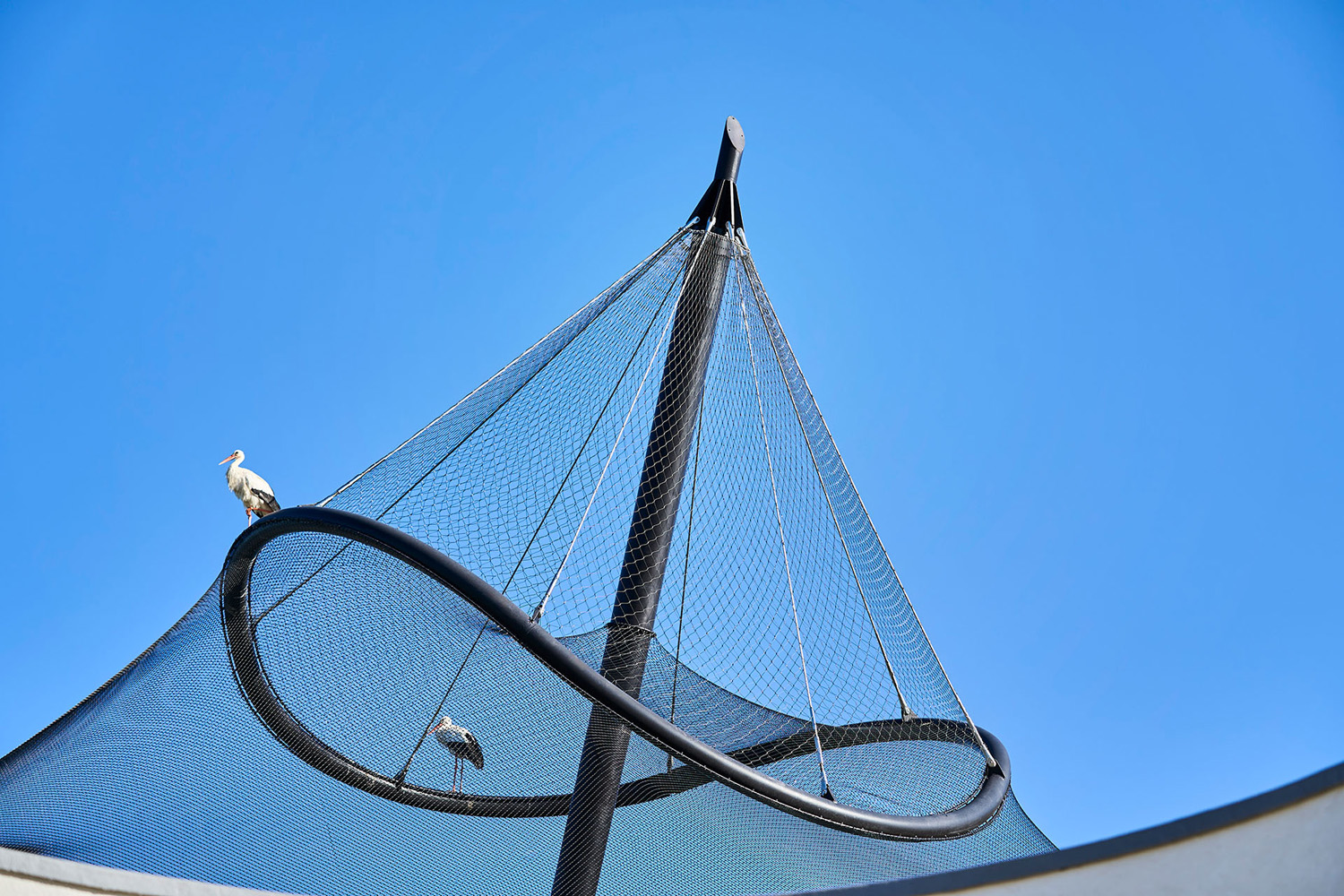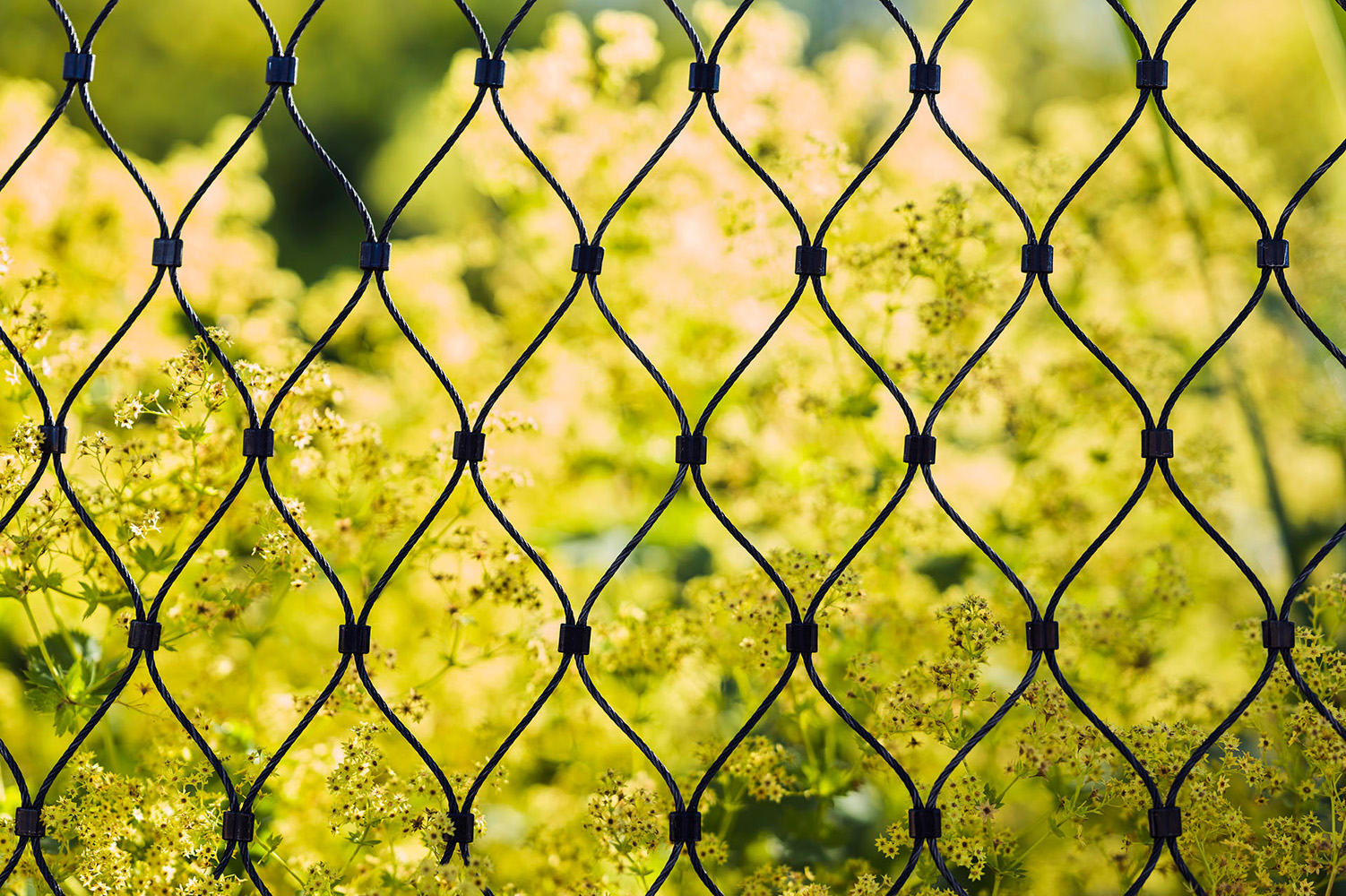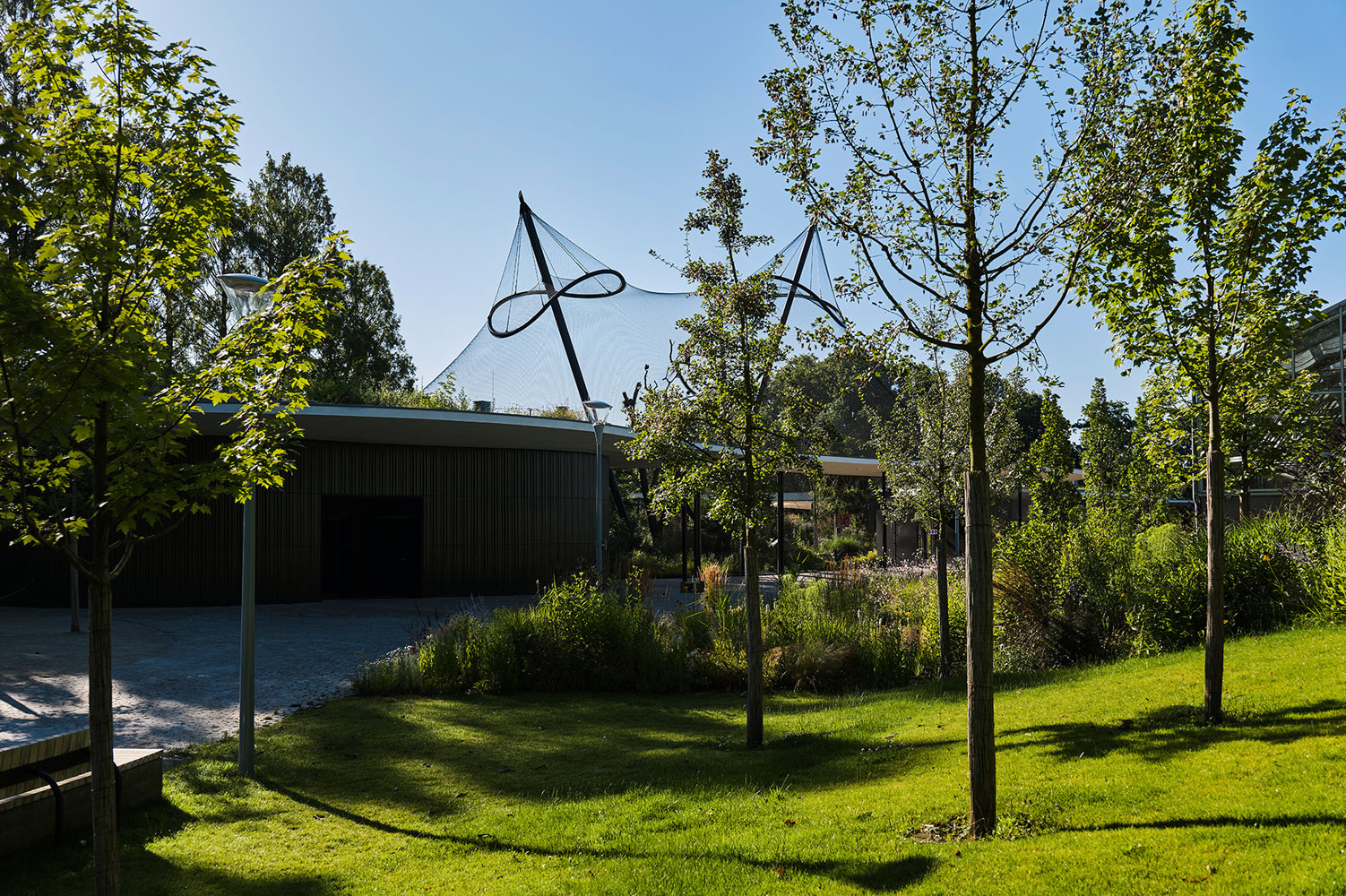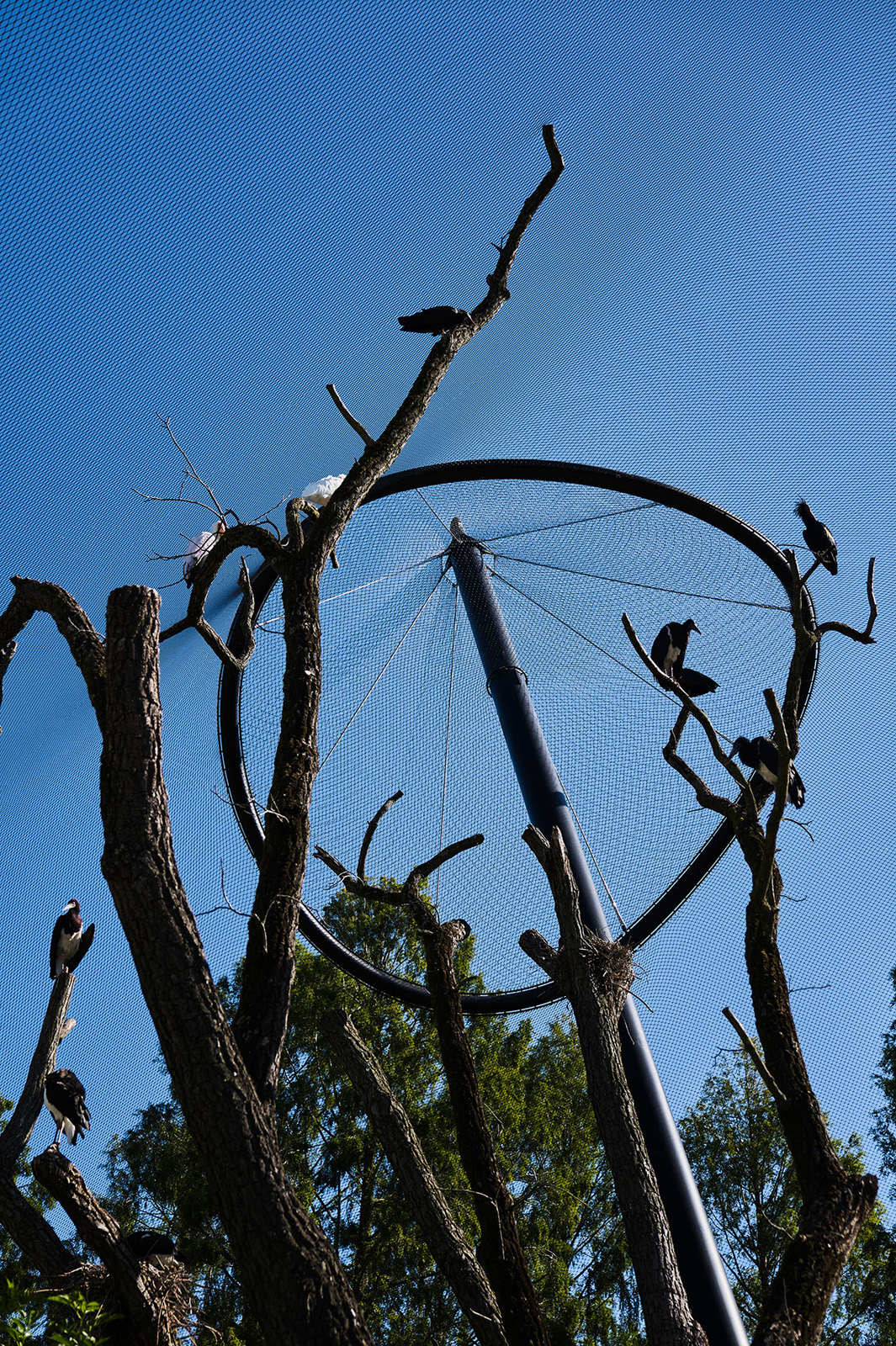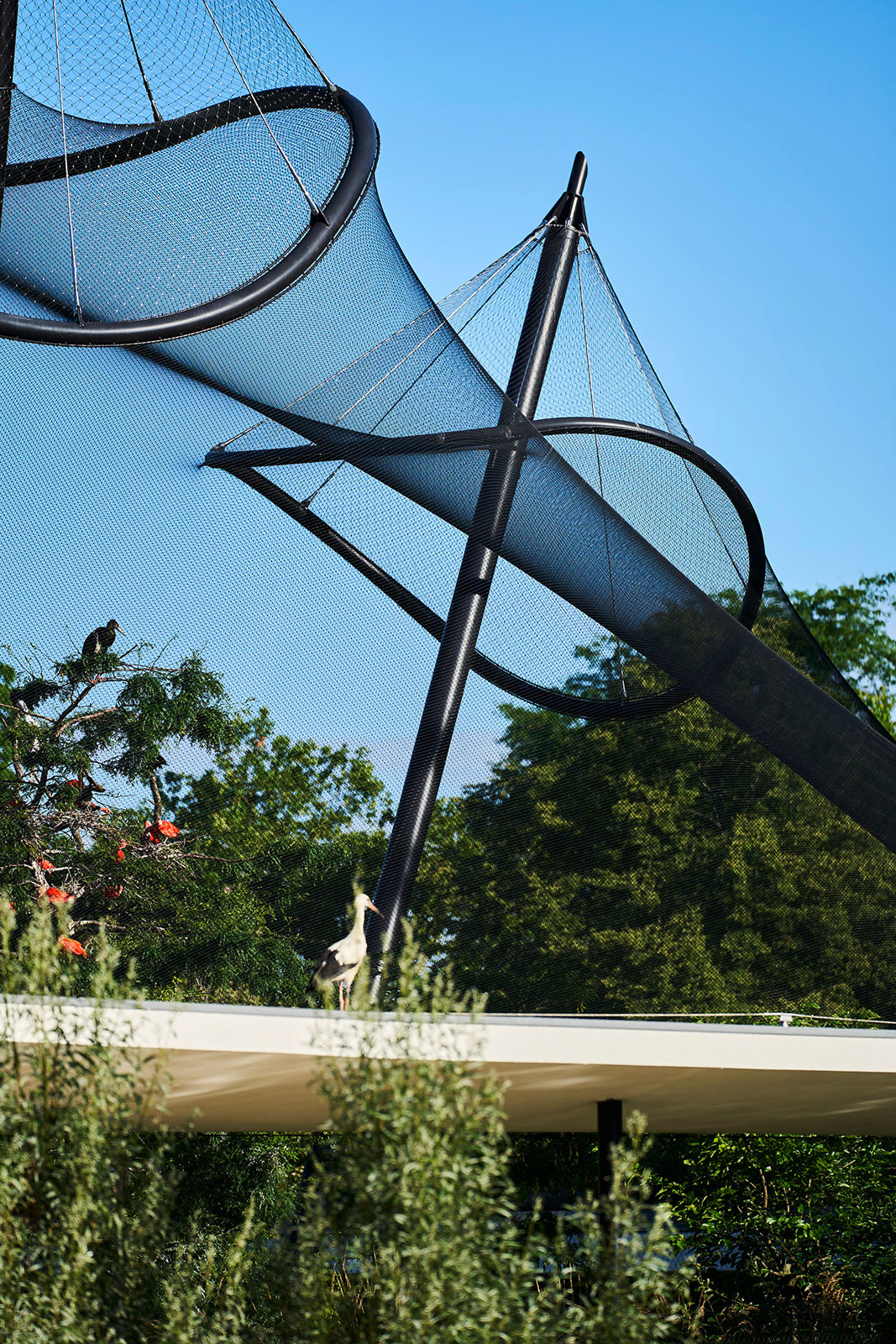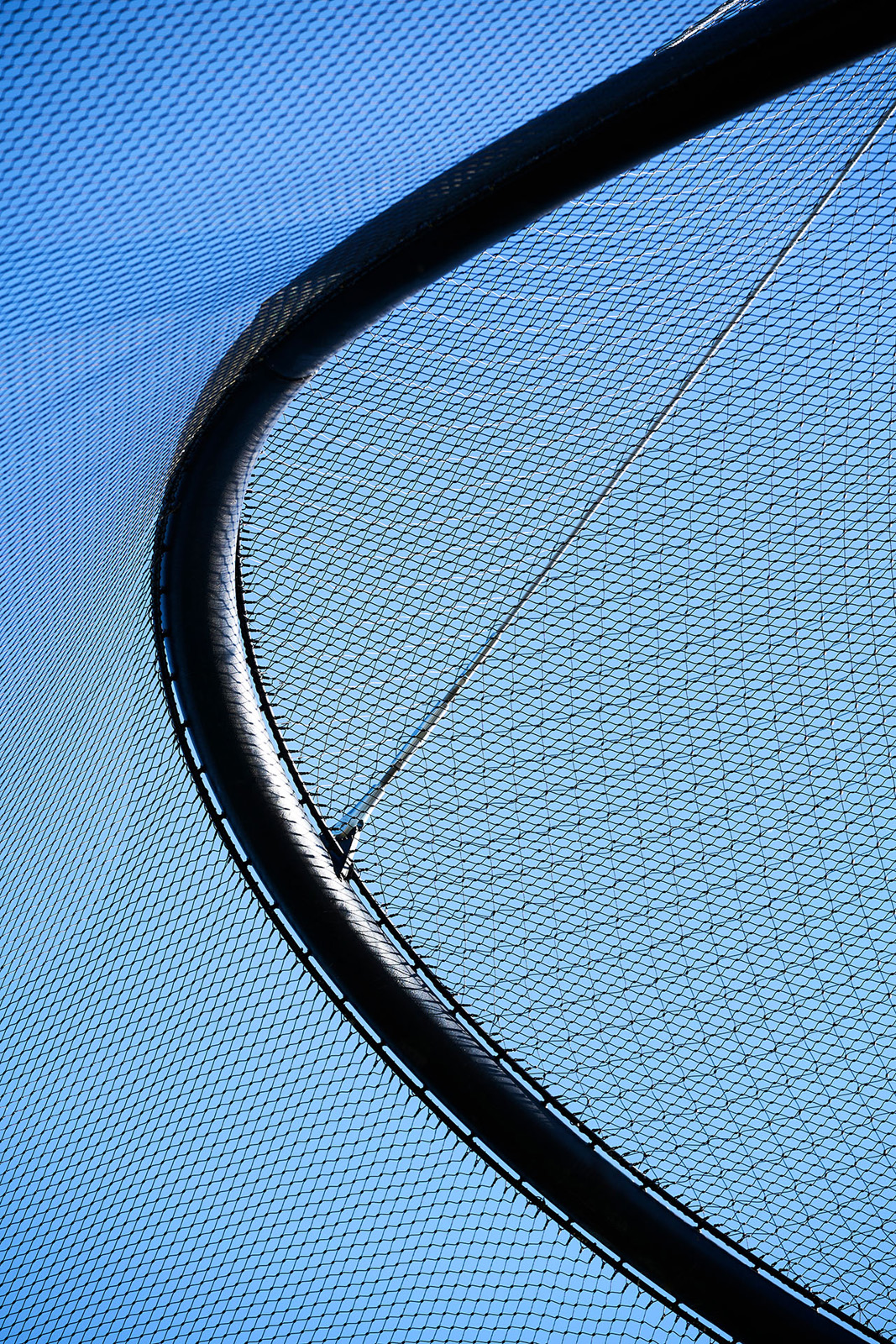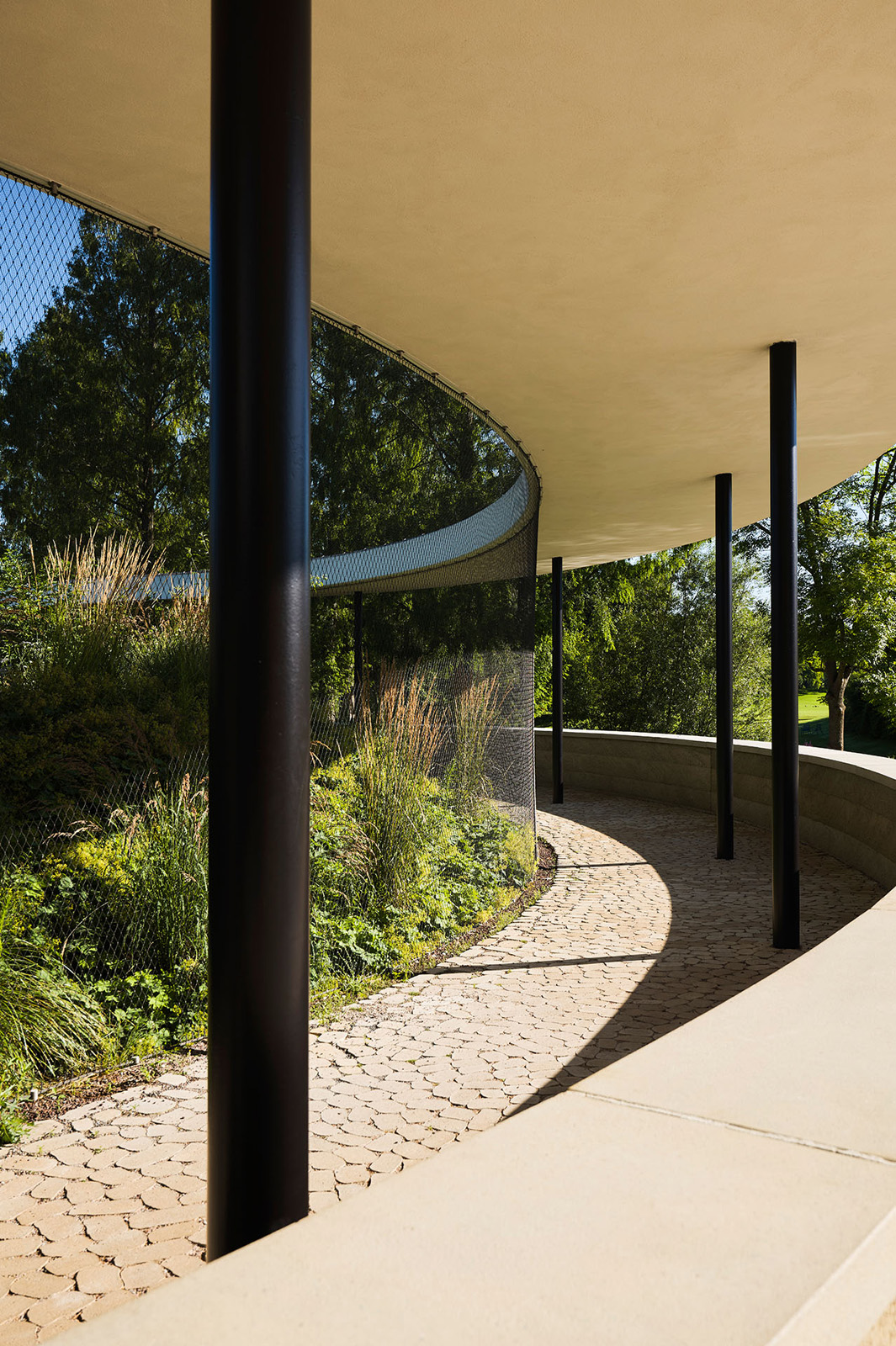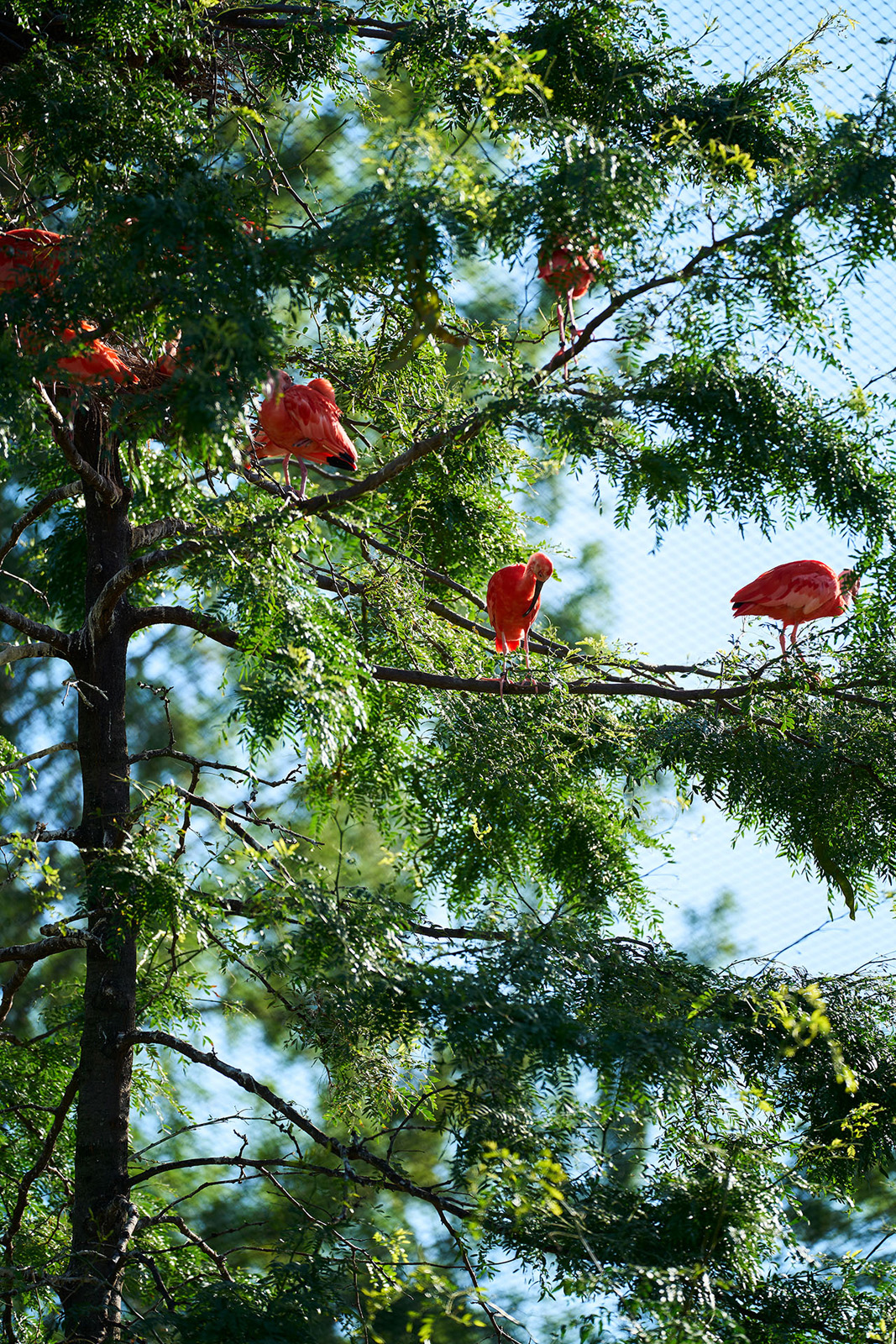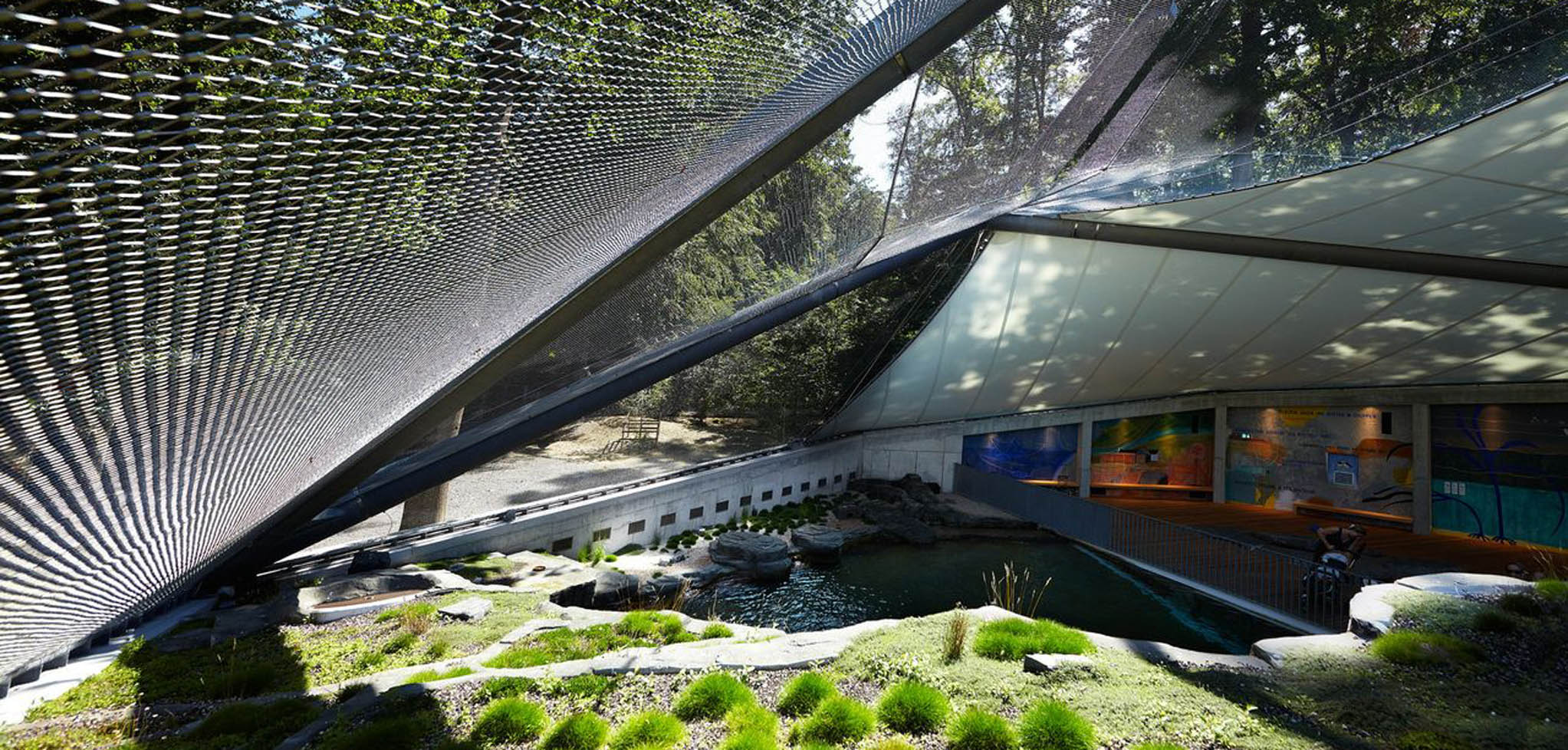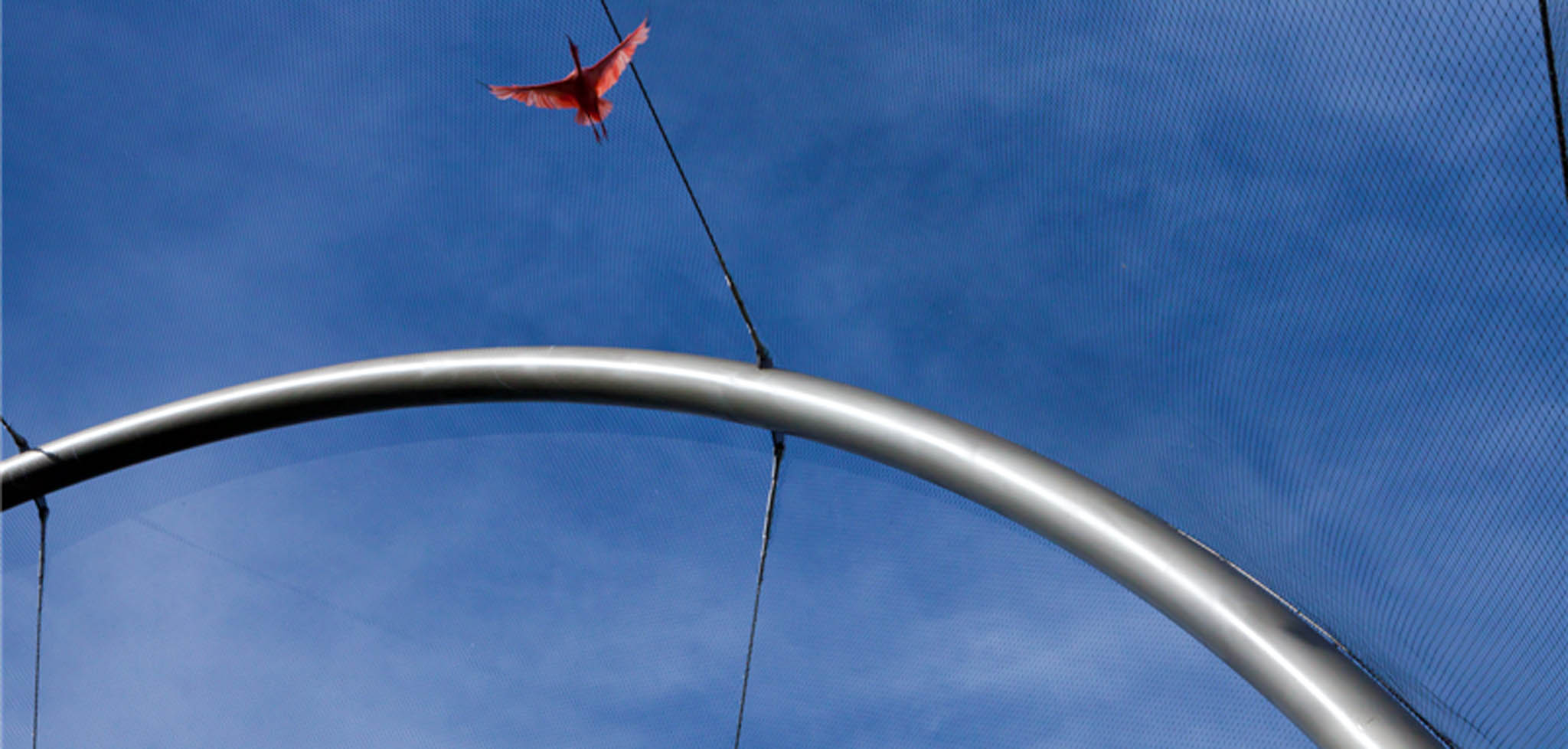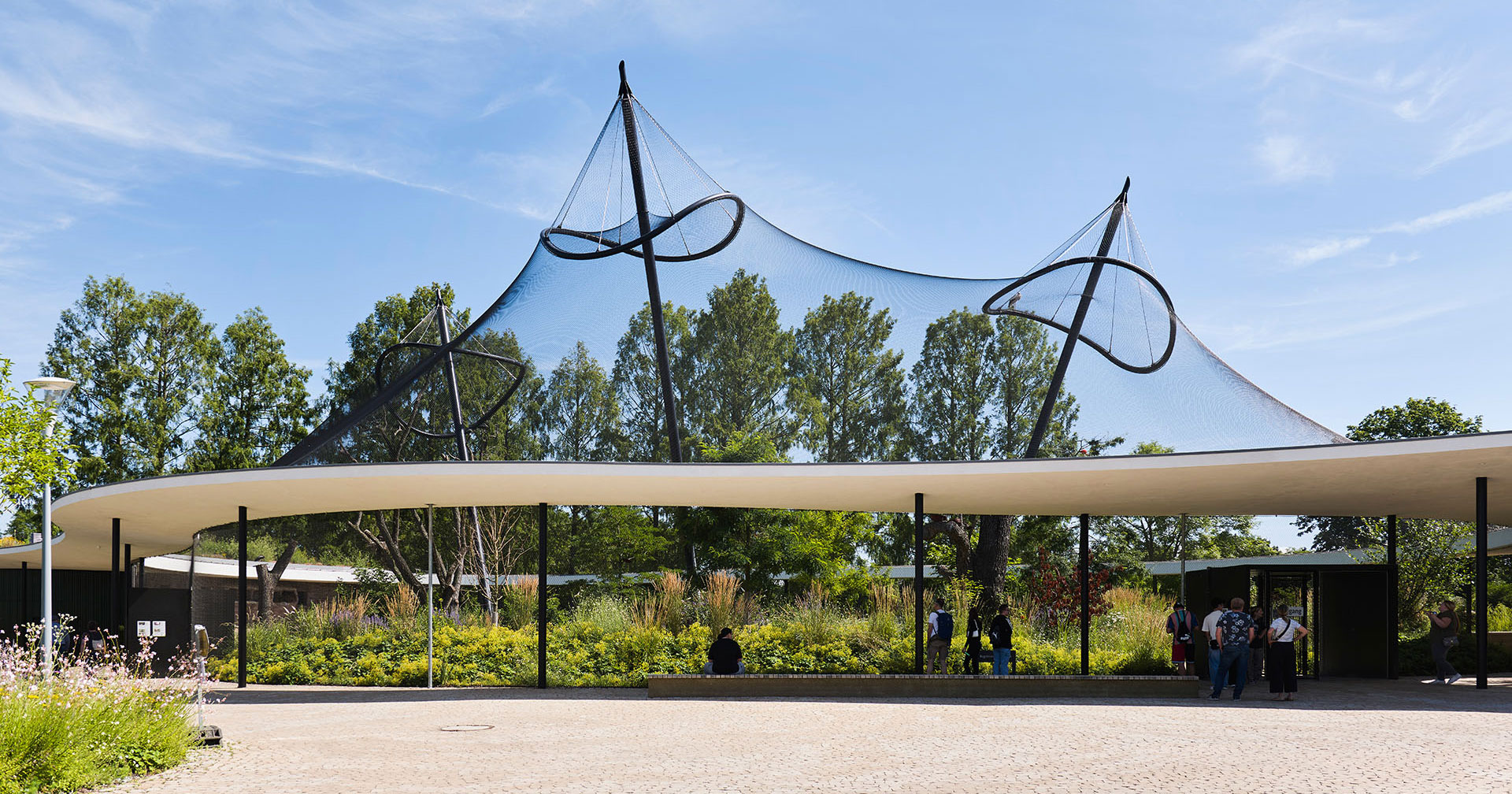Luisenpark Mannheim
Mannheim – Germany
Mannheim – Germany
Large Aviary in Luisenpark Mannheim: Transparent Beauty with Jakob Rope Systems
The Luisenpark Mannheim, originally built for the 1975 Federal Garden Show (BUGA), has evolved into one of the most loved green spaces in Mannheim, Germany. Recently, it was redesigned for the 2023 Federal Garden Show, with new features to enhance the landscape. Among these enhancements, a large, walk-in aviary was constructed, which now stands as a unique blend of architecture and natural habitat. The aviary is a testimony to the capabilities of Jakob Rope Systems, especially our renowned Webnet technology. This article will explore the construction, implementation, and design of this aviary, highlighting our contributions, particularly our solutions in safety fences, low-maintenance enclosures, and transparent zoo structures.
Luisenpark: A Green Oasis in Mannheim
The Legacy of Luisenpark
The Luisenpark was originally built for the 1975 Federal Garden Show (BUGA) and has since developed into a favorite destination for both locals and tourists. The park’s lush green spaces blend nature and architecture seamlessly, creating a sanctuary where people can connect with nature.
Revitalization for BUGA 2023
For BUGA 2023, Luisenpark received a major facelift. The redesign, by bez + kock architects in partnership with Koeber Landschaftsarchitektur, introduced organically shaped building elements to further enhance the park’s charm. Among the standout features is a newly constructed, expansive aviary that houses various bird species, providing them with a comfortable and open habitat while also offering visitors an immersive experience.
The New Aviary: A Haven for Birds
A Closer Look at the Aviary
The newly built aviary occupies an area of 1,300 square meters and serves as a home for African storks, red ibises, and bald ibises. The structure is designed with ample retreats, nesting places, and a flight height of up to 13 meters, providing an expansive and enriched environment for the birds.
Visitor Experience
The aviary features a circular walking path that allows visitors to enjoy a 360-degree view of the birdlife within. Small bodies of water, varied plantings, and a spacious flying height provide an airy and open ambiance, creating a truly immersive experience for visitors. The use of our Webnet makes this possible, combining structural integrity with maximum transparency.
Construction and Implementation: The Role of Jakob Rope Systems
A Transparent and Lightweight Design
The design of the aviary is characterized by its transparent, tent-like roof, which rises gracefully above the bird enclosure. The structure uses three pylons, each rising to a height of 16 meters, giving it a floating appearance that enhances the open feel of the space.
Engineering Expertise
The project benefited from the collaboration between wh-p engineers, who provided the structural expertise, and Jakob Rope Systems, who were commissioned to design, deliver, and install the rope and Webnet structures. The curved aviary roof and surrounding walls utilize Webnet micro black elements, offering both aesthetic appeal and functional excellence.
Winter Installation Challenges
The installation of the aviary structure took place during the winter months of February to April 2023, adding a layer of complexity. Despite the challenges, we successfully completed the installation in time for the BUGA 2023 opening.
Webnet Technology: The Star of the Aviary
What is Webnet?
Webnet is a stainless steel mesh produced by Jakob Rope Systems. It is known for its strength, flexibility, and transparency, making it an ideal solution for structures like aviaries, safety fences, and architectural applications. Webnet is also low-maintenance, which means it’s perfect for large, outdoor installations where longevity is a key consideration.
The Aviary Roof and Wall
The aviary roof spans 1,950 square meters and is constructed using Webnet micro black with a mesh size of 40 mm. The discreet black coating helps it blend seamlessly into the environment, enhancing visibility for the birds while maintaining the structure’s integrity.
The surrounding aviary wall also uses Webnet micro black, with a mesh size of 40 mm, while a stork protection net was installed with a larger mesh size of 100 mm. These elements ensure that the structure remains visually unobtrusive while providing a secure environment for the birds.
Installation Techniques
For the aviary roof installation, we utilized three mobile telescopic articulated work platforms. This innovative approach allowed us to install the nets without the need for surface scaffolding, thereby minimizing the impact on the surrounding landscape. The aviary wall was installed using a façade scaffold, allowing for a precise and stable installation.
Jakob Rope Systems: A Global Presence with Local Expertise
We are known for our high-quality products not only in Europe but also across the United States. Our products, such as Webnet, are used in a wide variety of projects, ranging from safety fences to zoo enclosures. The versatility of Webnet makes it a preferred solution for applications like aviaries, stairway railings, and unobtrusive safety barriers.
The Luisenpark aviary is a perfect example of how we can bring together transparency, durability, and low maintenance to create a structure that blends beautifully into its natural surroundings. Similar projects are being implemented across the US market, where the demand for modern, visually appealing, and secure structures is increasing.
Safety and Transparency in Zoo Enclosures
Benefits of Webnet for Zoo Enclosures
Zoo enclosures require careful planning to balance animal safety with visitor engagement. Our Webnet achieves this balance by offering:
- Maximum Transparency: The fine mesh structure allows for unobstructed views, ensuring that visitors feel connected to the animals.
- Durability: Made of stainless steel, the Webnet is resistant to weathering and wear, making it ideal for outdoor use.
- Low Maintenance: Once installed, the Webnet requires minimal maintenance, which is crucial for large enclosures.
Luisenpark Aviary as a Model for Future Projects
The success of the aviary at Luisenpark Mannheim is a strong example of how Webnet can be effectively used in zoo enclosures. By combining functionality with aesthetics, we have set a standard for future projects, both in Europe and the United States.
Low Maintenance and Longevity
One of the key advantages of our Webnet is its low-maintenance nature. Zoo enclosures and similar installations require materials that are durable and can withstand the elements over extended periods. Webnet’s stainless steel construction ensures it remains in excellent condition with little intervention, reducing upkeep costs and ensuring longevity.
Project Partners and Collaborations
Collaborative Efforts for a Successful Project
The success of the Luisenpark aviary was made possible through the collaboration of several project partners, including:
- Architects: bez + kock architekten and Koeber Landschaftsarchitektur provided the architectural vision for the aviary and the redesigned park.
- Structural Design: wh-p Ingenieure worked alongside specialists Marlene Thimet and Rudi Oswald to provide the engineering solutions needed.
- Steel Construction: The company Roleff GmbH & Co KG was responsible for erecting the steel structure, providing a solid foundation for us to install the Webnet.
- Rope and Net Supply and Assembly: Jakob Rope Systems played a crucial role in the supply and assembly of the ropes and Webnet, ensuring that the aviary was both safe and aesthetically pleasing.
Technical Specifications of the Aviary
Geometry and Dimensions
- Aviary footprint: 1,300 sqm
- Maximum height of aviary: 13 m
- Average flight altitude: 10 m
- Height of inner stall: 4 m
Jakob Products and Services
Aviary Roof
- Webnet micro, Ø 2 mm, mesh size 40 mm
- Net area: 1,947.91 sqm
Stork Protection Net
- Webnet micro, Ø 2 mm, mesh size 100 mm
- Net area: 241.68 sqm
- Primary ropes: Stainless steel, Ø 10 mm, 1×19
Aviary Wall
- Webnet micro, Ø 1.5 mm, mesh size 40 mm
- Primary ropes: Stainless steel, Ø 10–12 mm, 6×19 + WC
The large aviary in Luisenpark Mannheim is a testament to the power of thoughtful design and quality materials. By using our Webnet, the aviary manages to be both functional and aesthetically pleasing, providing a safe haven for birds while allowing visitors to engage closely with nature. The project also highlights our expertise in delivering transparent, durable, and low-maintenance solutions for a variety of applications. As we continue to expand our presence in the US market, projects like the Luisenpark aviary set a standard for innovation and quality in architectural and safety solutions.
The Luisenpark Mannheim, originally built for the 1975 Federal Garden Show (BUGA), has evolved into one of the most loved green spaces in Mannheim, Germany. Recently, it was redesigned for the 2023 Federal Garden Show, with new features to enhance the landscape. Among these enhancements, a large, walk-in aviary was constructed, which now stands as a unique blend of architecture and natural habitat. The aviary is a testimony to the capabilities of Jakob Rope Systems, especially our renowned Webnet technology. This article will explore the construction, implementation, and design of this aviary, highlighting our contributions, particularly our solutions in safety fences, low-maintenance enclosures, and transparent zoo structures.
Luisenpark: A Green Oasis in Mannheim
The Legacy of Luisenpark
The Luisenpark was originally built for the 1975 Federal Garden Show (BUGA) and has since developed into a favorite destination for both locals and tourists. The park’s lush green spaces blend nature and architecture seamlessly, creating a sanctuary where people can connect with nature.
Revitalization for BUGA 2023
For BUGA 2023, Luisenpark received a major facelift. The redesign, by bez + kock architects in partnership with Koeber Landschaftsarchitektur, introduced organically shaped building elements to further enhance the park’s charm. Among the standout features is a newly constructed, expansive aviary that houses various bird species, providing them with a comfortable and open habitat while also offering visitors an immersive experience.
The New Aviary: A Haven for Birds
A Closer Look at the Aviary
The newly built aviary occupies an area of 1,300 square meters and serves as a home for African storks, red ibises, and bald ibises. The structure is designed with ample retreats, nesting places, and a flight height of up to 13 meters, providing an expansive and enriched environment for the birds.
Visitor Experience
The aviary features a circular walking path that allows visitors to enjoy a 360-degree view of the birdlife within. Small bodies of water, varied plantings, and a spacious flying height provide an airy and open ambiance, creating a truly immersive experience for visitors. The use of our Webnet makes this possible, combining structural integrity with maximum transparency.
Construction and Implementation: The Role of Jakob Rope Systems
A Transparent and Lightweight Design
The design of the aviary is characterized by its transparent, tent-like roof, which rises gracefully above the bird enclosure. The structure uses three pylons, each rising to a height of 16 meters, giving it a floating appearance that enhances the open feel of the space.
Engineering Expertise
The project benefited from the collaboration between wh-p engineers, who provided the structural expertise, and Jakob Rope Systems, who were commissioned to design, deliver, and install the rope and Webnet structures. The curved aviary roof and surrounding walls utilize Webnet micro black elements, offering both aesthetic appeal and functional excellence.
Winter Installation Challenges
The installation of the aviary structure took place during the winter months of February to April 2023, adding a layer of complexity. Despite the challenges, we successfully completed the installation in time for the BUGA 2023 opening.
Webnet Technology: The Star of the Aviary
What is Webnet?
Webnet is a stainless steel mesh produced by Jakob Rope Systems. It is known for its strength, flexibility, and transparency, making it an ideal solution for structures like aviaries, safety fences, and architectural applications. Webnet is also low-maintenance, which means it’s perfect for large, outdoor installations where longevity is a key consideration.
The Aviary Roof and Wall
The aviary roof spans 1,950 square meters and is constructed using Webnet micro black with a mesh size of 40 mm. The discreet black coating helps it blend seamlessly into the environment, enhancing visibility for the birds while maintaining the structure’s integrity.
The surrounding aviary wall also uses Webnet micro black, with a mesh size of 40 mm, while a stork protection net was installed with a larger mesh size of 100 mm. These elements ensure that the structure remains visually unobtrusive while providing a secure environment for the birds.
Installation Techniques
For the aviary roof installation, we utilized three mobile telescopic articulated work platforms. This innovative approach allowed us to install the nets without the need for surface scaffolding, thereby minimizing the impact on the surrounding landscape. The aviary wall was installed using a façade scaffold, allowing for a precise and stable installation.
Jakob Rope Systems: A Global Presence with Local Expertise
We are known for our high-quality products not only in Europe but also across the United States. Our products, such as Webnet, are used in a wide variety of projects, ranging from safety fences to zoo enclosures. The versatility of Webnet makes it a preferred solution for applications like aviaries, stairway railings, and unobtrusive safety barriers.
The Luisenpark aviary is a perfect example of how we can bring together transparency, durability, and low maintenance to create a structure that blends beautifully into its natural surroundings. Similar projects are being implemented across the US market, where the demand for modern, visually appealing, and secure structures is increasing.
Safety and Transparency in Zoo Enclosures
Benefits of Webnet for Zoo Enclosures
Zoo enclosures require careful planning to balance animal safety with visitor engagement. Our Webnet achieves this balance by offering:
- Maximum Transparency: The fine mesh structure allows for unobstructed views, ensuring that visitors feel connected to the animals.
- Durability: Made of stainless steel, the Webnet is resistant to weathering and wear, making it ideal for outdoor use.
- Low Maintenance: Once installed, the Webnet requires minimal maintenance, which is crucial for large enclosures.
Luisenpark Aviary as a Model for Future Projects
The success of the aviary at Luisenpark Mannheim is a strong example of how Webnet can be effectively used in zoo enclosures. By combining functionality with aesthetics, we have set a standard for future projects, both in Europe and the United States.
Low Maintenance and Longevity
One of the key advantages of our Webnet is its low-maintenance nature. Zoo enclosures and similar installations require materials that are durable and can withstand the elements over extended periods. Webnet’s stainless steel construction ensures it remains in excellent condition with little intervention, reducing upkeep costs and ensuring longevity.
Project Partners and Collaborations
Collaborative Efforts for a Successful Project
The success of the Luisenpark aviary was made possible through the collaboration of several project partners, including:
- Architects: bez + kock architekten and Koeber Landschaftsarchitektur provided the architectural vision for the aviary and the redesigned park.
- Structural Design: wh-p Ingenieure worked alongside specialists Marlene Thimet and Rudi Oswald to provide the engineering solutions needed.
- Steel Construction: The company Roleff GmbH & Co KG was responsible for erecting the steel structure, providing a solid foundation for us to install the Webnet.
- Rope and Net Supply and Assembly: Jakob Rope Systems played a crucial role in the supply and assembly of the ropes and Webnet, ensuring that the aviary was both safe and aesthetically pleasing.
Technical Specifications of the Aviary
Geometry and Dimensions
- Aviary footprint: 1,300 sqm
- Maximum height of aviary: 13 m
- Average flight altitude: 10 m
- Height of inner stall: 4 m
Jakob Products and Services
Aviary Roof
- Webnet micro, Ø 2 mm, mesh size 40 mm
- Net area: 1,947.91 sqm
Stork Protection Net
- Webnet micro, Ø 2 mm, mesh size 100 mm
- Net area: 241.68 sqm
- Primary ropes: Stainless steel, Ø 10 mm, 1×19
Aviary Wall
- Webnet micro, Ø 1.5 mm, mesh size 40 mm
- Primary ropes: Stainless steel, Ø 10–12 mm, 6×19 + WC
The large aviary in Luisenpark Mannheim is a testament to the power of thoughtful design and quality materials. By using our Webnet, the aviary manages to be both functional and aesthetically pleasing, providing a safe haven for birds while allowing visitors to engage closely with nature. The project also highlights our expertise in delivering transparent, durable, and low-maintenance solutions for a variety of applications. As we continue to expand our presence in the US market, projects like the Luisenpark aviary set a standard for innovation and quality in architectural and safety solutions.
Applications
Animal Enclosures
References

